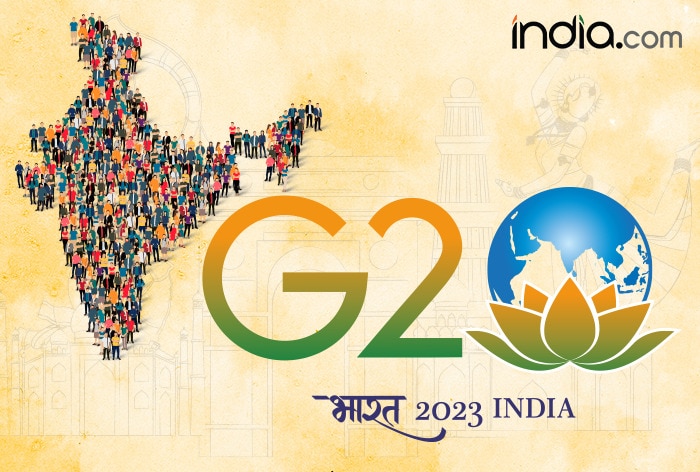UPSC CSE(Prelims) 2024 Exam: Current affairs play a pivotal role in the preparation and success of IAS (Indian Administrative Service) aspirants. Staying informed about current affairs enhances your g
UPSC CSE(Prelims) 2024 Exam: Current affairs play a pivotal role in the preparation and success of IAS (Indian Administrative Service) aspirants. Staying informed about current affairs enhances your general awareness and knowledge about the world, including political, economic, social, and environmental issues. This broader understanding is essential for a career in the civil services. Speaking of the Main Examination, particularly in the General Studies papers, questions often require candidates to analyze and discuss current events in the context of governance, policy formulation, and societal impact. A strong grasp of current affairs can help you give relevant examples and arguments in your answers. In broad terms, an Interview or Personality test is really an assessment of not only intellectual qualities but also social traits and interest in current affairs.
With a three-stage selection process, high competition, and comprehensive knowledge, the UPSC Civil Services Examination (CSE) is often regarded as one of the most challenging and toughest competitive exams in India. These days you might be seeing the word ‘G20 Summit’ flashing on your mobile screens, and news headlines. But what is G20? Why is it relevant for students? What importance does it hold? In this article, we will answer all your questions. From objective to agenda; key things you must remember while UPSC CSE(Prelims) 2024 preparation. Read below.
What is G20?
The Group of Twenty (G20) is the premier forum for international economic cooperation. The event holds an important role in shaping and strengthening global architecture and governance on all major international economic issues.
History of G20?
- The G20 was founded in 1999 after the Asian financial crisis of 1997-98 as an informal forum for the Finance Ministers and Central Bank Governors of the most important industrialized and developing economies to discuss international economic and financial stability.
- The G20 was upgraded to the level of Heads of State/Government in the wake of the global economic and financial crisis of 2007, and in 2009, when it became apparent that the necessary crisis coordination would only be possible at the highest political level. Since then, the G20 Leaders have met regularly, and the G20 has become the premier forum for international economic cooperation.
- The G20 Summit is held annually, under the leadership of a rotating Presidency. The forum initially focused largely on broad macroeconomic issues, but it has since expanded its agenda to inter-alia include trade, climate change, sustainable development, health, agriculture, energy, environment, climate change, and anti-corruption.
G20 Members
The Group of Twenty (G20) comprises 19 countries such as Argentina, Australia, Brazil, Canada, China, France, Germany, India, Indonesia, Italy, Japan, Republic of Korea, Mexico, Russia, Saudi Arabia, South Africa, Türkiye, United Kingdom and United States and the European Union. The G20 members represent around 85% of the global GDP, over 75% of the global trade, and about two-thirds of the world population.
How Does G20 Actually Work?
- The G20 Presidency steers the G20 agenda for one year and hosts the Summit. The G20 consists of two parallel tracks: the Finance Track and the Sherpa Track.
- Finance Ministers and Central Bank Governors lead the Finance Track. Meanwhile, Sherpas lead the Sherpa Track after Finance Track.
- The G20 process from the Sherpa side is coordinated by the Sherpas of member countries, who are personal emissaries of the Leaders. Finance Track is led by Finance Ministers and Central Bank Governors of the member countries. Within the two tracks, there are thematically oriented working groups in which representatives from the relevant ministries of the members as well as from invited/guest countries and various international organisations participate.
- The Finance Track is mainly led by the Ministry of Finance. These working groups meet regularly throughout the term of each Presidency. The Sherpas oversee negotiations over the course of the year, discussing agenda items for the Summit and coordinating the substantive work of the G20.
G20 Logo
Taking about the logo, the G20 Logo draws inspiration from the vibrant colours of India’s national flag – saffron, white and green, and blue. It juxtaposes planet Earth with the lotus, India’s national flower that reflects growth amid challenges. The Earth reflects India’s pro-planet approach to life, one in perfect harmony with nature. Below the G20 logo is “Bharat”, written in the Devanagari script.
This Year’s Theme For G20 Presidency
The theme of India’s G20 Presidency – “Vasudhaiva Kutumbakam” or “One Earth · One Family · One Future” – is drawn from the ancient Sanskrit text of the Maha Upanishad. Essentially, the theme affirms the value of all life – human, animal, plant, and microorganisms – and their interconnectedness on the planet Earth and in the wider universe.
The theme also spotlights LiFE (Lifestyle for Environment), with its associated, environmentally sustainable and responsible choices, both at the level of individual lifestyles as well as national development, leading to globally transformative actions resulting in a cleaner, greener and bluer future.

